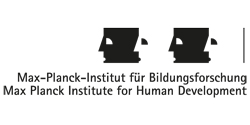How Humans and Machines Navigate Complex Situations

Which career is right for me? Which pension scheme should I invest in? Which chess move should I make next? In many of the decisions we make, the number of possible actions is vast. Theoretically, we can only find out which option is best for us by trying out all the possibilities.
As that is clearly impossible, we have to either rely on tried-and-tested options or take risks in trying out new ones. In all our decisions, we tread an intuitive balance between these two poles — and often manage to find good solutions. The dilemma between exploring new opportunities and sticking to what we know is termed the “exploration-exploitation dilemma.”
It is of interest not only to psychologists, but also to computer scientists who program learning algorithms. They need to make sure that the algorithm balances two tasks: drawing on information that is known while also exploring new and unknown options — for example, when making personalized recommendations for customers in online shops.
But how exactly do people navigate situations with only a few known options against a vast set of unknown ones? And can machine learning algorithms handle these same computational challenges?
To investigate these questions, a team of researchers from the Max Planck Institute for Human Development, Harvard University, University College London, and the University of Surrey developed a series of experimental decision games. The games were played by 241 people, as well as by computers applying different models and algorithms.
In the online games, human and virtual players were presented with a grid of tiles. Each tile was worth a certain number of points; this reward was revealed only when the tile was clicked. Because the number of clicks available to each player was considerably smaller than the number of tiles, the players could only try out a limited number of options.
Initially, neither the humans nor the computers knew whether there was any pattern in the spatial arrangement of tiles in terms of whether neighboring tiles had similar point values. With time, they became aware of the spatial patterns behind the tiles and used this knowledge to develop a strategy that balanced clicking on neighboring tiles (exploitation) and opting for riskier, more distant tiles (exploration).
“People don’t have to experience every option in order to make good decisions. They are able to generalize from the basis of just a few known options and make predictions about where exploration may seem promising,” says Charley Wu, lead author and doctoral student at the Max Planck Institute for Human Development. “We also found that people are quite optimistic and curious, actively exploring the most unfamiliar options.”
The learning algorithms were also fairly successful — some more than others. In a direct comparison of human behavior and algorithms, the researchers found that combining two common algorithms enabled them to predict human behavior surprisingly well. The first algorithm predicted the spatial structure of the environment by generalization; the second simulated “curiosity” and tended to try out unknown tiles.
“The results of our study show how machine learning methods can help us gain a better understanding of human decision making. Conversely, psychological studies can help to improve the algorithms used in computer science — because in most areas human intelligence is still far superior to machine intelligence,” says Björn Meder, adjunct researcher at the Max Planck Institute for Human Development.
The Max Planck Institute for Human Development in Berlin was founded in 1963. It is an interdisciplinary research institution dedicated to the study of human development and education. The Institute belongs to the Max Planck Society for the Advancement of Science, one of the leading organizations for basic research in Europe.
Wu, C. M., Schulz, E., Speekenbrink, M., Nelson, J.D., & Meder, B. (2018). Generalization guides human exploration in vast decision spaces. Nature Human Behaviour. doi.org/10.1038/s41562-018-0467-4
https://www.mpib-berlin.mpg.de/en/media/2018/11/how-humans-and-machines-navigate…
Media Contact
All latest news from the category: Science Education
Newest articles

Economies take off with new airports
A global study by an SUTD researcher in collaboration with scientists from Japan explores the economic benefits of airport investment in emerging economies using nighttime satellite imagery. Be it for…

CAR T–cell immunotherapy targets
Pan-cancer analysis uncovers a new class of promising CAR T–cell immunotherapy targets. Scientists at St. Jude Children’s Research Hospital found 156 potential CAR targets across the brain and solid tumors,…

Stony coral tissue loss disease
… is shifting the ecological balance of Caribbean reefs. The outbreak of a deadly disease called stony coral tissue loss disease is destroying susceptible species of coral in the Caribbean…





















